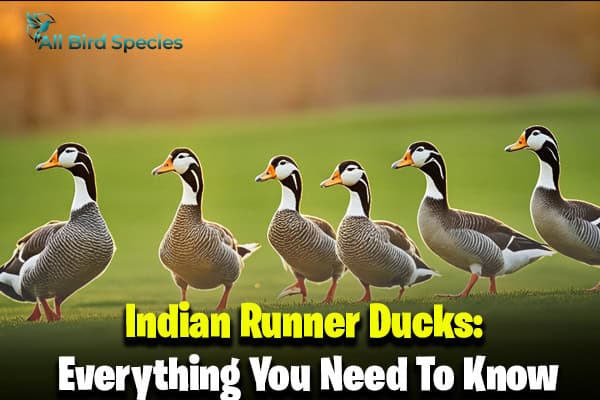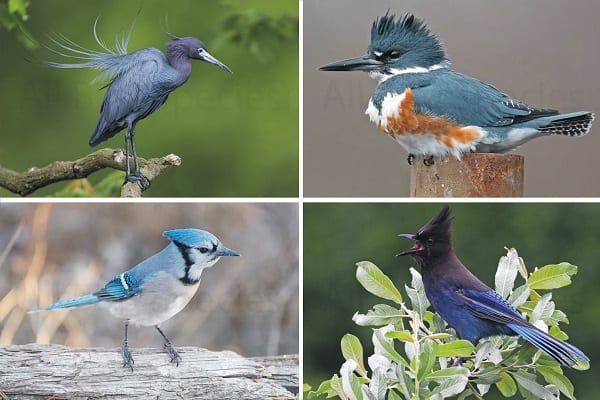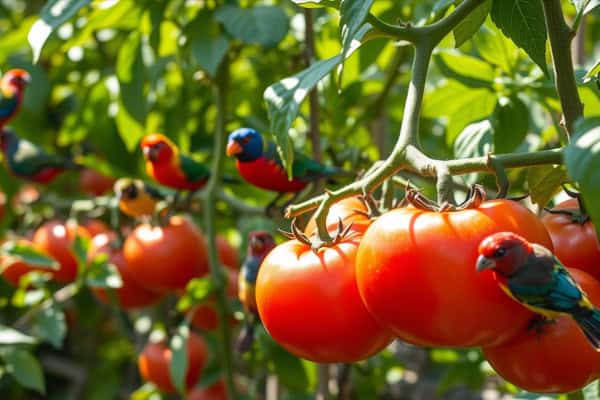Indian Runner Ducks: Everything You Need To Know
Did you know Indian Runner Ducks lay 240 to 300 eggs a year? This makes them a hit with poultry lovers. It shows their special place in duck breeding.
Thinking of getting Indian Runner Ducks? You’re in for a treat. They stand upright and are full of life. Their fun nature and social ways make them a hit with backyard farmers and pet lovers.
Looking into duck care for Indian Runners? You’ll see why they’re loved everywhere. You’ll learn about their history and special traits. This info will help you care for and enjoy these birds.
What are Indian Runner Ducks?
- Scientific name: Anas platyrhynchos domesticus.
- Weight: 1.4 – 2.3 kg.
- Wingspan: Not enough to fly.
- Age: Up to 10 years.
- Diet: Anything.
- Habitat: Very adaptable,
Indian Runner Ducks are special in the world of poultry. They stand tall and look like bowling pins. This makes them stand out with their lively energy.
These ducks are great at finding food on their own. They look for insects and plants in your yard. Watching them is fun and they help your garden too.
Indian Runner Ducks love being around others of their kind. They bring happiness to those who care for them. Their fun ways and friendly nature make them a great addition to any home.
Unique Characteristics of Indian Runner Ducks
Indian Runner Ducks have a special charm that makes them stand out. They are not just ordinary ducks. Their looks and behavior are both interesting and charming.
Physical Appearance
These ducks are easy to spot because of their unique look. They stand upright, like a wine bottle or bowling pin. Their long necks and slender bodies add to their unique look.
Their eyes sit high, giving them a watchful look. Their straight bills add to their special features. These traits make them not just pretty but also good at finding food.
Behavioral Traits
Indian Runner Ducks are full of energy and love to play. They stick together in groups, moving as one. They love being around other ducks and show it through their playful actions.
They act like trained swimmers, moving smoothly through water or running on land. Watching them is fun because they always seem to be up to something interesting.
| Characteristic | Description |
|---|---|
| Stance | Upright and alert, similar to a wine bottle. |
| Body Shape | Slender and elongated, ideal for efficient movement. |
| Neck | Long and graceful, enhancing their elegant look. |
| Eyes | High-set, promoting keen awareness of surroundings. |
| Bill | Straight, aiding in foraging and feeding. |
Indian Runner Duck Lifespan and Health
It’s important to know how long Indian Runner ducks live and how to keep them healthy. With the right care, they can live about 8 to 10 years. Things like what they eat, where they live, and regular vet visits are key to their health.

Average Lifespan Expectations
Indian Runner ducks usually live between 8 to 10 years. Taking good care of them can help them live longer. Give them a good diet, clean water, and a safe place to live. This will help them stay healthy and live a long life.
Common Health Issues
Indian Runner ducks can get sick like any pet. They might get respiratory infections or problems from living too close together. It’s important to take them to the vet regularly. Watching what they eat and where they live helps keep them healthy. Taking steps early can help prevent these health issues.
| Health Issue | Prevention方法 | Symptoms |
|---|---|---|
| Respiratory Infections | Provide adequate ventilation and avoid overcrowding | Coughing, nasal discharge, difficulty breathing |
| Overcrowding | Ensure sufficient space for each duck | Stress signs, aggressive behavior, lethargy |
| Obesity | Monitor diet and ensure exercise | Weight gain, lethargy, difficulty moving |
Egg Production and Indian Runner Duck Eggs
Indian Runner ducks are great for egg production. They lay about 220 to 240 eggs each year. This makes them top layers in backyard flocks.
You’ll have lots of eggs for cooking with these ducks. They’re perfect for many recipes.
Average Egg Production Rate
Indian Runner ducks lay around 7 eggs a week. This shows they’re great at laying eggs. Home cooks and bakers love them for their eggs.
These ducks give you a steady supply of fresh eggs. They’re great for many recipes.
Egg Characteristics
Indian Runner duck eggs are special. They are white or blue and weigh about 2.8 ounces. The USDA calls them ‘jumbo’ eggs.
These eggs taste rich and are nutritious. But, Runners don’t often get broody. If you want to hatch ducklings, you’ll need to manage that on your own.
Color Varieties of Indian Runner Ducks
Indian Runner Ducks are known for their beautiful Indian Runner duck colors. Breeders and fans love the color varieties they show. From fawn to chocolate, their feathers are full of life and color.
Common Color Patterns
Indian Runner Ducks have many unique color patterns. Some well-known ones are:
- Fawn & White
- White
- Penciled
- Black
- Buff
- Chocolate
- Cumberland Blue
- Gray
Each color variety has its own special look. This makes them perfect for shows and as pets.
Breeding for Colors
Breeding Indian Runner Ducks for certain Indian Runner duck colors takes skill. It’s all about picking the right parents. Knowing how genes work is key to getting the color you want. Breeders also look for good looks, performance, and personality.
Those who breed ducks for color focus on what looks best in shows. As you learn more about breeding, you’ll see how it makes these ducks even more special.
| Color Variety | Description |
|---|---|
| Fawn & White | Soft fawn with white markings, offering a classic look. |
| White | Pure white, popular for its striking appearance. |
| Penciled | Fine penciling creates a unique patterned effect. |
| Black | Solid black coloration, a bold choice for breeders. |
| Buff | Warm buff shade, appealing and gentle. |
| Chocolate | Rich chocolate hue, growing increasingly popular. |
| Cumberland Blue | Distinct light blue color, rare and sought after. |
| Gray | Elegant gray tone, versatile for various settings. |
Feeding and Care Requirements
Your Indian Runner ducks need special care with their food and living space. Knowing what they need to eat is key to their health and happiness.
Dietary Needs
Indian Runner ducks eat a diet rich in nutrients. This diet mainly includes special duck feed. You should also give them:
- Greens like lettuce, kale, and spinach
- Calcium sources like crushed oyster shells for eggs
- Occasional treats like snails, slugs, and small insects
Feeding them a mix of foods keeps them healthy and happy. A balanced diet is vital for their daily needs. This helps them lay eggs regularly.
Space and Housing Considerations
Good housing is important for your ducks. They love to move a lot.
- Their run or pen should be at least 4 feet high for jumping.
- They need outdoor space to find their own food.
- Always have clean water for drinking and bathing.
With the right care and space, you’ll make a great home for your ducks. A good home makes their life better and helps them grow.
| Dietary Component | Purpose |
|---|---|
| Duck Feed | Primary nutrition source |
| Greens | Vitamins and minerals |
| Calcium Sources | Support egg production |
| Foraged Foods | Variety and natural behavior |
Male vs Female Indian Runner Ducks
Knowing the differences between Indian Runner duck males and females is key. You’ll notice their unique traits and behaviors. This knowledge makes owning or enjoying these ducks more rewarding.
Identifying Male and Female Ducks
To tell males from females, look for these signs:
- Tail Feathers: Males have curly tail feathers, while females have straight ones.
- Quack Sounds: Males make a deeper quack, and females make a higher-pitched one.
These signs make it easier to tell them apart. They also help you know how to care for each one.
Behavioral Differences
Indian Runner ducks behave differently, depending on their gender. Both like to be around others, but males can be more bossy.
- Males often lead the group.
- Females are more likely to talk and interact with others.
Knowing these differences helps you create a happy home for your ducks. It ensures they live well together.
Social Dynamics and Flocking Behavior
It’s key to know how Indian Runner ducks live together. They have strong instincts to be in groups, which is good for their health and happiness. Being with others makes them feel safe and happy. Being alone can make them stressed and cause bad behavior.
Importance of Flock to Runners
Being in a group is crucial for Indian Runner ducks. They do well when they can forage and groom together. Being in a group lowers their stress and makes their life better. They talk to each other, which builds a strong community feeling.
Integrating with Other Poultry
When mixing Indian Runner ducks with other birds, be careful. They can live with chickens and other types, but watch them at first. Know how each bird likes to live to keep peace. This helps them live together well.
Training and Handling Indian Runner Ducks
Training Indian Runner ducks makes owning them more fun. It helps you connect better with them. Early socialization, gentle handling, and positive rewards are key.
Building Trust with Ducks
Building trust with your ducks takes time and patience. It makes them feel safe around you. Here’s how to do it:
- Spend time near them, letting them get used to you.
- Talk to them softly and calmly.
- Give them treats to make them happy.
- Handle them gently to avoid making them stressed.
Skills You Can Teach Them
You can teach your Indian Runner ducks many skills. Training them makes your bond stronger. Here are some skills to try:
- Basic commands like “come” or “stay.”
- Agility exercises to keep them fit.
- Fun tricks to make learning fun.
Training your ducks regularly helps them feel less stressed. This makes them easier to handle. Adding these skills to your routine will make living with them better.
| Training Skill | Purpose | Expected Outcome |
|---|---|---|
| Basic Commands | Enhance communication | Improved responsiveness |
| Agility Exercises | Encourage physical activity | Better health and fitness |
| Fun Tricks | Promote mental stimulation | Increased engagement and bonding |
Conclusion
Indian Runner ducks add charm and usefulness to your home. They stand tall and move with energy. They are fun to watch and help your garden by laying eggs.
Taking care of ducks takes work, but it’s very rewarding. Knowing what they need for food, space, and friends helps them thrive. They make your outdoor time more fun with their lively actions.
Indian Runner ducks are more than cute and fun. They become great friends when you care for them. They bring joy and help your garden grow. Adding them to your farm or garden is a smart choice.







